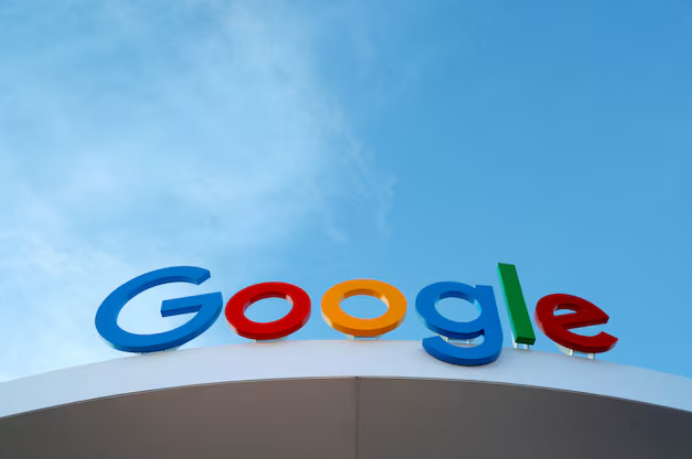
On May 3, 2025, the U.S. Department of Justice formally proposed to split Google's ad technology business at a hearing held in the Virginia Federal Court. The game of monopoly power in the field of digital advertising has officially entered a critical stage. With Judge Leonie Brinkema setting September 22 as the deadline for submitting remedies, the global digital advertising market is facing a structural change that may reshape the industry ecology.
The core of the Justice Department's accusation focuses on the dual monopoly structure in Google's ad technology architecture. After acquiring the ad trading platform Invite Media for US$81 million in 2010, Google built a "dual monopoly" model covering ad servers and trading platforms: by technically binding the ad delivery server (Ad Server) with the real-time bidding platform (RTB), Google formed a "data-transaction" closed loop. Court documents revealed that Google had pressured publishers to use Google servers to access the RTB system. This "tying behavior" caused competitors' market share to shrink from 35% in 2012 to less than 10% in 2024.
More noteworthy is the accusation of "data hegemony" by the Department of Justice. Google controls more than 60% of online advertising data traffic, forming a "data black box": advertisers cannot obtain cross-platform performance comparison data, and publishers are forced to accept Google's pricing algorithm. This structural monopoly was defined by Judge Brinkema as "technical strangulation that suffocates competition", which forms a logical closed loop with the judgment of "traffic gate control" in the search engine monopoly case in August 2024.
The split plan proposed by the Department of Justice presents a clear technical deconstruction path: the first stage requires Google to open the real-time bidding data interface of the RTB platform within 90 days to allow third-party systems to access; the second stage is to divest the advertising server business and force the sale of its core component "Google Ad Manager". This plan directly targets the precedent of divesting IE browser in the Microsoft antitrust case in 2002, but the difference is that Google's advertising technology has deeply penetrated the publisher's infrastructure.
The market reaction reveals the expectation of power reconstruction brought about by the split. As of the close of May 6, the stock price of Google's parent company Alphabet fell by 3.7%, while the stock price of advertising technology supplier The Trade Desk soared by 42%. Investment bank Goldman Sachs predicts that if the split is implemented, Google's advertising network revenue (US$30.4 billion in 2024) will be diverted to competitors such as Magnite and PubMatic, which may give rise to new industry giants. However, Google Vice President Lee-Anne Mulherin warned that forced divestiture will cause publishers' technology costs to soar by 30%, and small and medium-sized media may face a survival crisis.
This case reflects the global regulators' upgraded cognition of technology monopoly. Unlike the search engine monopoly case that focuses on "traffic entrance control", the advertising technology monopoly case directly points to the underlying infrastructure power of "data-algorithm-transaction". The EU's "Digital Markets Act"'s preliminary charges against Google and the Japan Fair Trade Commission's injunction, together with the United States' split demands, form a cross-continental regulatory synergy. Deputy Attorney General Julia Taffer Wood emphasized: "Google is not a traditional monopolist, but an architect of the digital ecosystem, and the monopoly firewall it designed must be dismantled."
The deeper challenge lies in balancing innovation and competition. Google defended that its technology integration reduced industry costs, but the Department of Justice refuted it by citing internal documents: In 2018, Google's advertising department assessed that opening data interfaces would lead to an 18% drop in profit margins. This "efficiency monopoly" paradox forces regulators to redefine fair competition standards in the digital age. Judge Brinkema's mediation proposal at the hearing suggested that there might be room for compromise in the split plan, but the market generally expects the Department of Justice to insist on a structural split to establish a precedent.
As the September 22 deadline approaches, this game about the lifeblood of digital advertising is entering a climax. The split request not only tests the judge's judicial definition of technological monopoly, but also reshapes the power distribution of infrastructure in the global Internet economy. In the new business era driven by artificial intelligence and big data, the U.S. Department of Justice's attempt to dismantle Google's advertising empire may become a milestone in the antitrust war in the digital age.

The global electric vehicle market in 2025 is experiencing intense turbulence. Tesla, once a disruptor that reshaped the industry landscape, is now mired in an unprecedented sales crisis.
The global electric vehicle market in 2025 is experiencing …
Recently, Chinese telecom companies Huawei and ZTE signed a…
Recently, according to Xinhua News Agency, Israel's air str…
A strongly worded report from the Equality Trust argues tha…
On November 27, 2025, Alibaba officially entered the global…
The focus of the global financial market in 2025 has always…